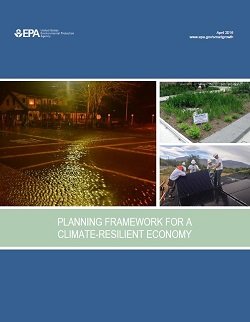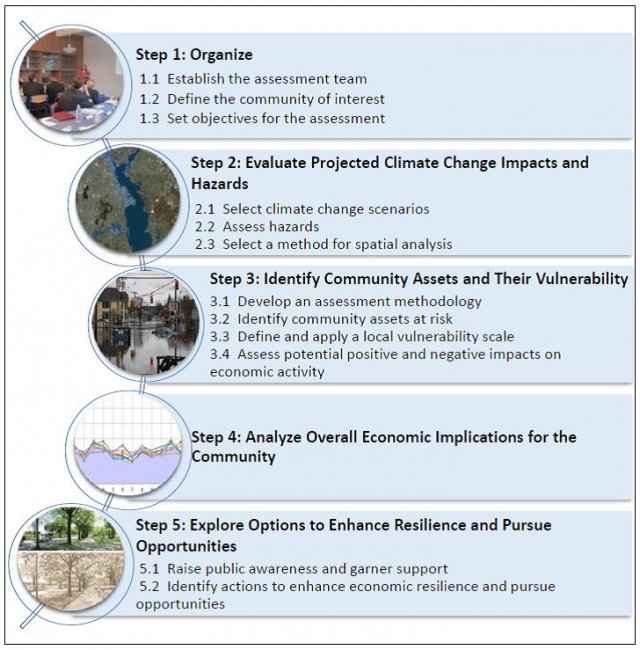Planning Framework for a Climate-Resilient Economy

EPA worked with the Rhode Island Division of Planning to develop the Planning Framework for a Climate-Resilient Economy (pdf) to help communities assess their economic vulnerability to climate change and improve their economic resilience.
Projected greenhouse gas emissions over the coming decades are likely to contribute to shifts in precipitation patterns, higher temperatures, rising sea levels, and more frequent extreme weather events. These changes will likely add to the economic challenges that many communities already face. Having a climate-resilient economy—one that can withstand or recover quickly from climate impacts in the short and long terms—is essential to a community's long-term well-being.
Starting to plan now with climate and economic resilience in mind will help the community and its businesses protect themselves against short-term shocks such as storms, reduce the need (and cost) to recover from a shock, incorporate economic resilience into other planning efforts, get a jumpstart on pursuing new opportunities that might arise as the climate changes, and might even attract new investment and new businesses.
Many community, business, and government leaders recognize the problem and are calling for action to prepare for and adapt to the potential impacts of a changing climate. However, even with tools to estimate a community's vulnerability to specific climate-related threats, it can be difficult to translate these threats into an economic bottom line and identify ways to become more resilient and take advantage of new opportunities.
To address this gap, EPA worked with the Rhode Island Division of Planning to develop this framework. A pilot community, North Kingstown, Rhode Island, tested and refined the framework.
The framework consists of five basic steps (see figure). It can be adapted by communities anywhere in the country for their context and can be modified to cover small or large geographic areas and their economies.
The framework can help communities ask the right questions to recognize their economic vulnerabilities and identify ways to be more climate resilient, with a focus on helping the business community prepare for and adapt to projected changes and think creatively about ways to prosper in a changing climate.
It is designed to be flexible so communities with varying levels of analytical expertise, time, and funds can use it. Some communities can use it to get a "big picture" assessment of their vulnerabilities. Others could use more sophisticated tools such as GIS and other computer-based models and a team of experts to map out specific economic impacts or threats and business opportunities.
Find more resources on how smart growth strategies can help with climate change adaptation and strategies for disaster resilience and recovery.

